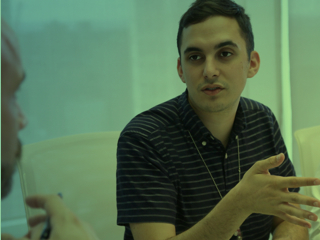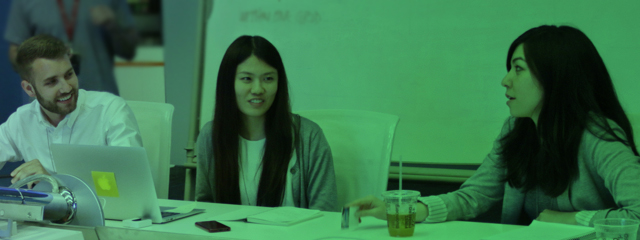<dsn>
Design overview
From our findings, we generated a number of design ideas and tested them with employees before picking our final concept. We then used an iterative design process to create a working conceptual prototype of our final design.
Visioning
We arrived at our final concept through a process of design ideation and concept validation. From our spring semester research, we generated over 100 different design ideas using a number of brainstorming exercises. We narrowed this set of ideas down through two rounds of evaluation, consolidation, further ideation, and concept validation. We gathered feedback from the perspectives of employees and stakeholders, all of which culminated in our final proposed concept.
Prototyping
Prototyping and user testing are some of the main tools we used to support the development of our design. We refined our design concept through multiple prototype iterations of increasing fidelity. We then built upon our design between each round of testing, based mainly on feedback from test participants. Through this process of iterative prototyping and user testing, we designed and built our final concept.
Final Concept
After multiple rounds of iterative prototype building and testing, we built a working prototype of our final design concept. Due to the proprietary nature of our work, we are unable to show any designs here.

